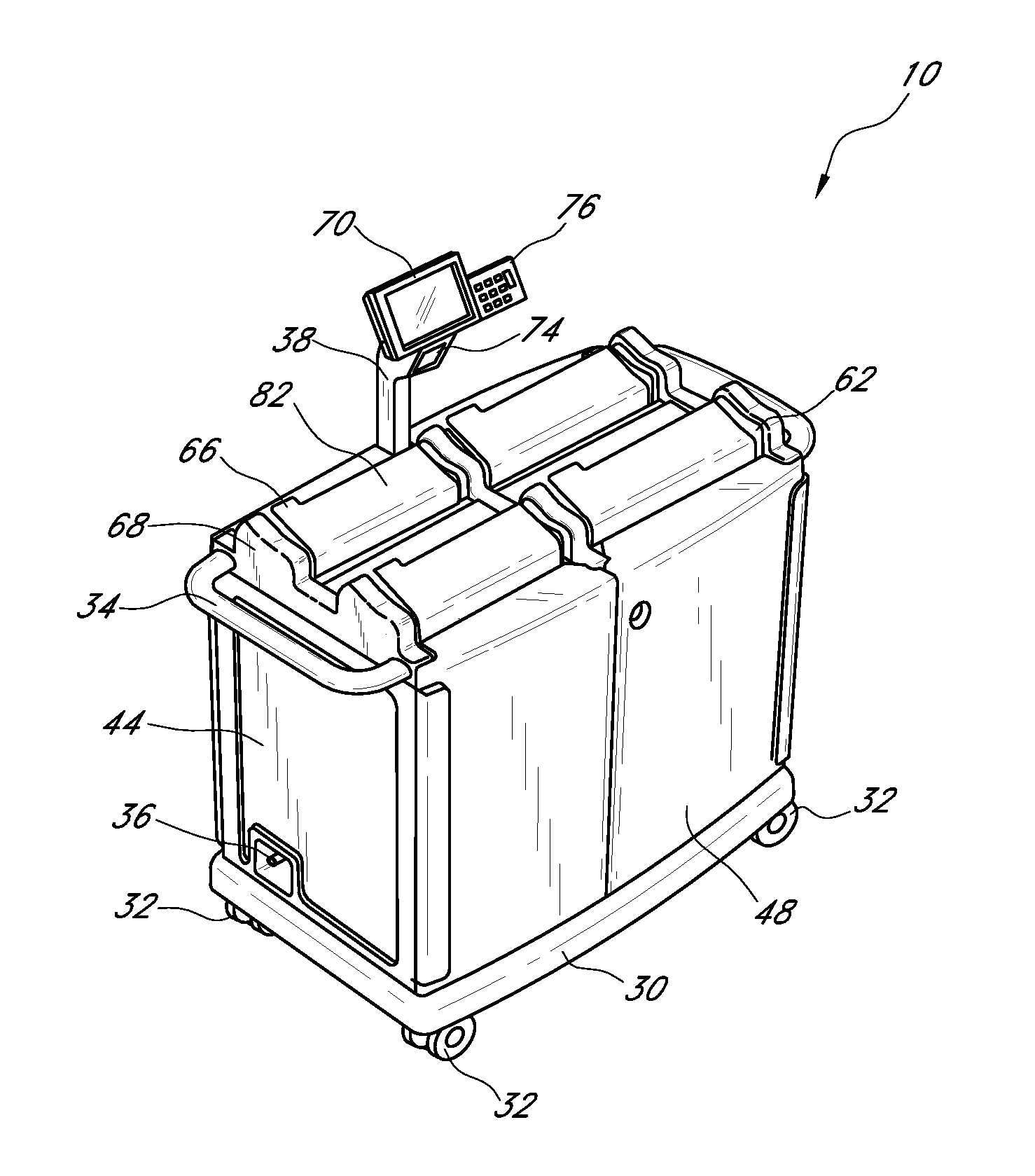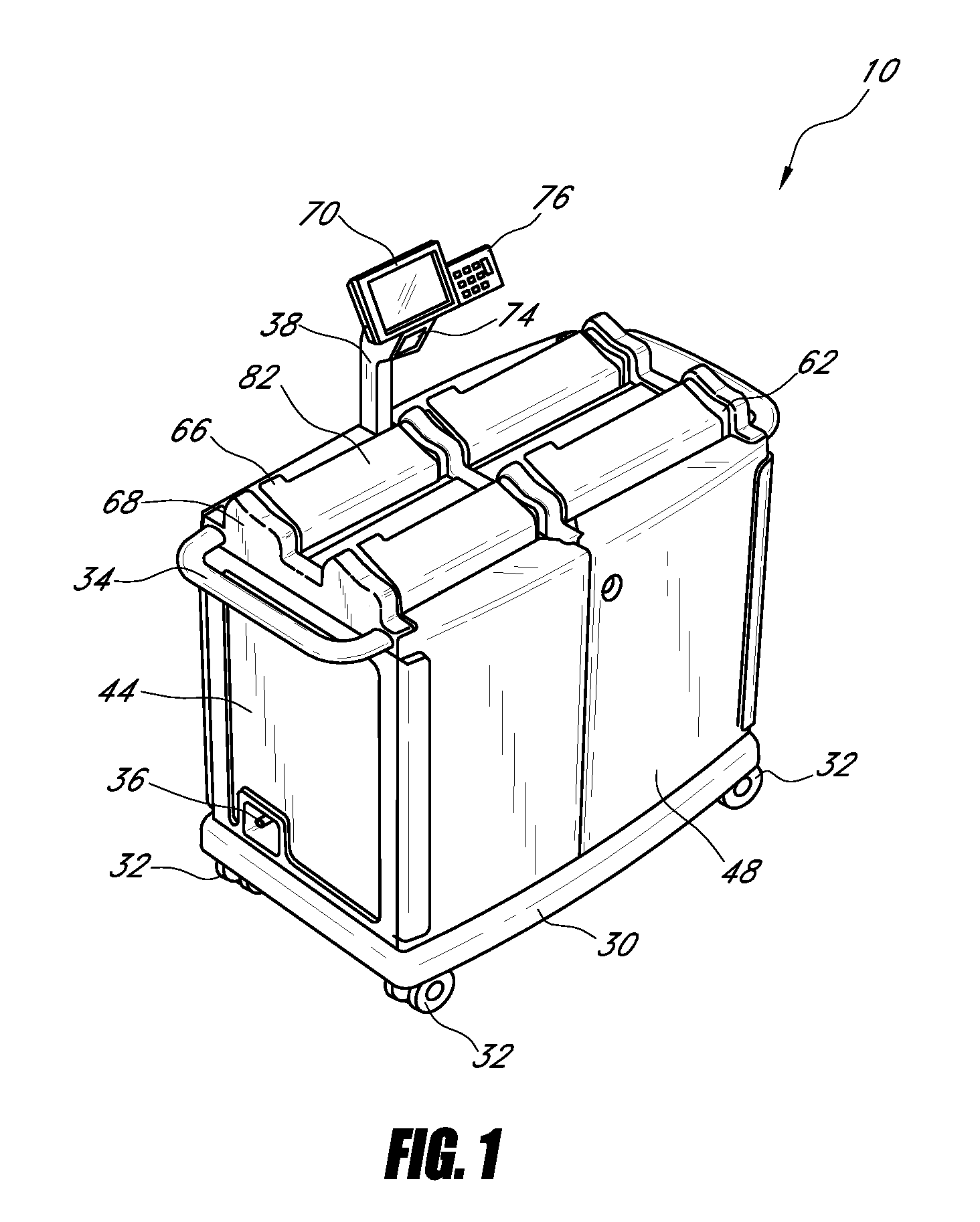Systems and methods for disposing narcotic and other regulated waste
a technology for regulated waste and waste disposal, applied in the field of waste disposal systems, can solve the problems of little choice for hospitals, damage to the endocrine system, and inability to completely treat the waste of technology, and achieve the effect of preventing co-mingling of drugs and minimizing co-mingling
- Summary
- Abstract
- Description
- Claims
- Application Information
AI Technical Summary
Benefits of technology
Problems solved by technology
Method used
Image
Examples
examples
[0105]The following non-limiting examples illustrate embodiments of the disclosure presented herein and are not intended in any way to limit the disclosure provided herein.
example no.1
Example No. 1
[0106]In one embodiment, a nurse obtains a syringe or other container having a controlled substance (e.g., morphine) that will be injected into a patient. In order to obtain information regarding the controlled substance (e.g., name, concentration, batch number, etc.), the nurse can use a scanner (e.g., located on a sorting and disposal station, a handheld or any other location) to scan the barcode of the syringe. Once the sorting and disposal system recognizes that the syringe comprises a controlled substance, it can prompt the nurse to enter certain identifying information, such as, for example, his or her name. In some embodiments, the nurse slides his or her identification card through a reader, passes his or her card in the vicinity of a RFID reader or performs any other action that allows the system to automatically recognize his or her identity. In addition, the system can optionally require that one or more authorized persons witness the nurse while he or she ad...
example no.2
Example No. 2
[0109]In some embodiments, a nurse obtains a vial having a controlled substance (e.g., morphine) that will be injected into a patient. The nurse manually enters the information about the controlled substance contained with the vial into the sorting and disposal system using a touchscreen or some other data input device. Once the sorting and disposal system recognizes that the syringe comprises a controlled substance, it will prompt the nurse to enter certain identifying information, such as, for example, his or her name. The nurse manually enters the requested identifying information. In addition, the system optionally requires that an authorized person witness the nurse while he or she administers the controlled substance and / or wastes a particular volume of the controlled substance in accordance with the prescribed treatment. Thus, the witness automatically or manually identifies himself or herself to the system.
[0110]For purposes of this example, the syringe contains...
PUM
 Login to View More
Login to View More Abstract
Description
Claims
Application Information
 Login to View More
Login to View More - R&D
- Intellectual Property
- Life Sciences
- Materials
- Tech Scout
- Unparalleled Data Quality
- Higher Quality Content
- 60% Fewer Hallucinations
Browse by: Latest US Patents, China's latest patents, Technical Efficacy Thesaurus, Application Domain, Technology Topic, Popular Technical Reports.
© 2025 PatSnap. All rights reserved.Legal|Privacy policy|Modern Slavery Act Transparency Statement|Sitemap|About US| Contact US: help@patsnap.com



